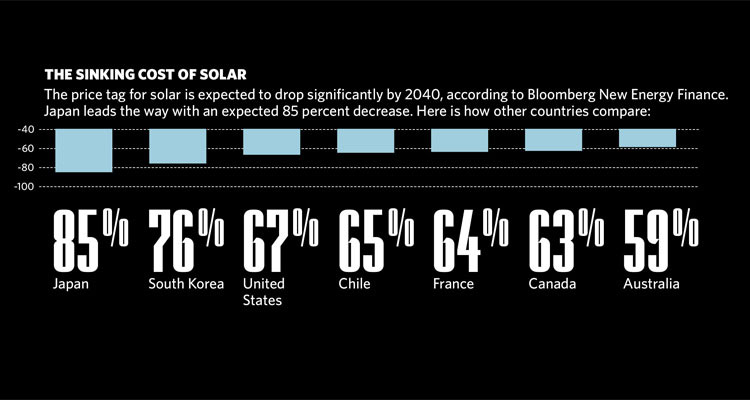The Ticker: China’s Clean Energy Movement
China is making moves to clean up its act.
Air pollution in the country contributes to an estimated 1.6 million deaths each year, according to a recent study by Berkeley Earth. But a spate of new clean energy projects aims to improve public health and help China build stronger economic and diplomatic ties.
One major effort is a solar field installed by the government in May that will create enough energy to “provide light and air conditioning to much of a nearby city,” reports The New York Times. “The provincial government wants to expand the effort to more than a dozen sites, which collectively would produce the same amount of power as a full-size commercial nuclear reactor.”

The installation, built atop a lake formed by the collapse of abandoned coal mines, is part of China’s larger effort to become a global leader in clean energy. China aims to get 20 percent of its energy from renewable sources by 2030, reports National Geographic. Share on X To that end, China has increased its investment in renewables by 17 percent, which now reflects more than a third the total global spend, according to Global Trends in Renewable Energy Investment 2016, published by the United Nations Environment Programme and Bloomberg.
China’s clean energy investment does not end at its borders. As part of President Xi Jinping’s “One Belt, One Road” plan—a $1 trillion initiative to cultivate economic and diplomatic ties through infrastructure building—China will fund and help implement clean energy projects across Asia, East Africa and Eastern Europe.
Despite these glowing prospects, China has also seen several clean energy setbacks. According to Greenpeace, 19 percent of the country’s wind power was wasted in the first three quarters of 2016 due to grid operators’ bias toward coal production. And China’s National Development and Reform Commission cautioned earlier this year that the country’s electricity distribution system is not flexible enough to handle renewable power. Technological obstacles related to connecting wind and solar assets to the grid also left some renewable energy stranded.



